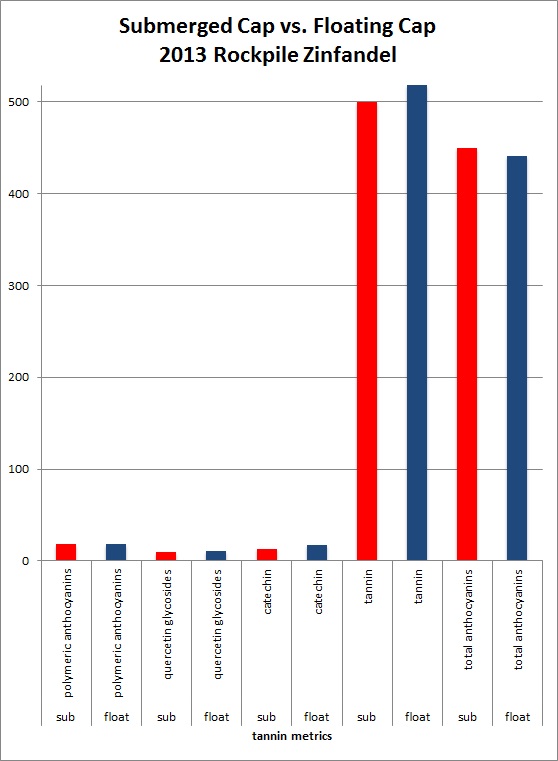Hey Mr. Wizard, What Happens When Scientific Method Fails?
“Don’t be too much of a pain in the ass this year,” Brian warned. “You may not be invited back.” And with his words evaporated my big dreams of randomized controlled trials, divvying my one and two ton lots into various, complicated treatment arms, each with unique yeasts and protocols. In the end, the 2013 harvest was all about fun work, playing with new yeasts and wooden tanks and an old favorite. Yes 2013 marked the third consecutive application of the fermentation toy I’m remiss to dis, the legendary “submerged cap device.” The term “device” is literal. It’s a MacGyver sort of rig, crafted from a custom cut slab of food grade plastic. I drilled full-thickness holes so CO2 can evaporate out the top. Once fermentation really gets going, I hoist the heavy square into the top of my bin and shove it down with all my might. It won’t budge. Then I ask a couple of the guys for help. It takes muscle, grit, a pair of inverted grape picking bins, a 2 x 4 plank, and a set of heavy-duty ratchet straps to get everything in place. The theory is my “submerged cap device” holds the grape skins beneath the juice all the time, thereby increasing color and extraction more thoroughly and gently than with manual punch downs. In fact, you don’t ever punch down the cap since the device prevents it from floating up to the top. One surmises this method culls more color and more tannin from the skins, thereby enhancing the depth of the finished wine.
I’m proud of my ingenuity. Submerged caps were common in Rhone wines, except their “submerged cap device” was a stainless steel screen built into a stainless steel tank. But my way works too. I like to share my genius with others.
“Why don’t you just punch down your bin more often,” questioned Party Pooper #1. “Won’t that do the same thing?” Too obvious, duh.
“Why don’t you buy Gore-Tex waders and walk around inside the bin?” offered Practical Guy #2. OMG! Too messy.
“Why don’t you use the submerged cap device that I paid for in 2009?” needled Bruliam CFO Brian Overstreet.
I first implemented The Device for the 2010 Soberanes Vineyard pinot. noir. The wine got a good score; obviously it works. I reached for it again in 2011. I insisted we remove it once a day for a manual punch down and then re-rig it back in place. I was not very popular. That year I actually divided the fruit between a submerged cap treatment arm and a traditional floating cap with punch downs. Hard data supported my claims. The submerged cap paid dividends. You can see I increased my color (anthocyanins) by about 30%. Not too shabby for a thin-skinned pinot.
In 2012, I popped it in my Sangiacomo Vineyard pinot noir. I fermented one clone with a traditional floating cap and my Pommard clone submerged. The floating cap bin stuck. It wrecked my neat data, and I cursed the Gods of Stuck Fermentations. I should’ve gone with the Gore Tex waders.
This brings me to my current ex-harvest, 2013. Ebullient, I pulled out The Device for my Rockpile zin. Since zin is another thin-skinned and lesser pigmented grape, I figured what the heck. I assured the winery team it was a great idea. I boasted how I ramped up my anthocyanin (color) and tannins (body) in ‘11. I was the wine making visionary, an epitome of precocity. All I needed was The Device, bins, a 2 x 4 plank, ratchet straps, a leap and prayer and a couple of brawny arms. No problem! Except James had to climb into the bin barefoot and walk around on The Device to submerge the cap. And the ratchet straps wouldn’t lock properly. And I forgot the 2 x 4 plank at home. And we needed 4 bins, not 2. But surely the reward of super rich pigmentation, depth of flavor, enhanced round tannins, and an exceptional finish would outweigh the upfront distress. Plus, I’d have hard data to back my claims.
Sometimes science comes up and bites you in the ass. Does anyone know a statistician who can fudge one standard deviation for those total anthocyanins?


